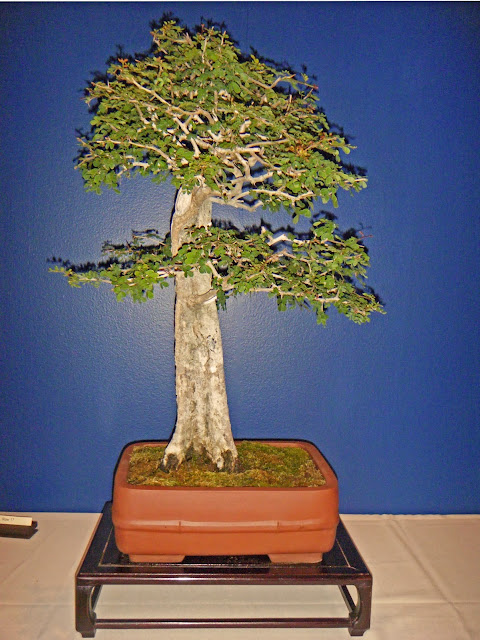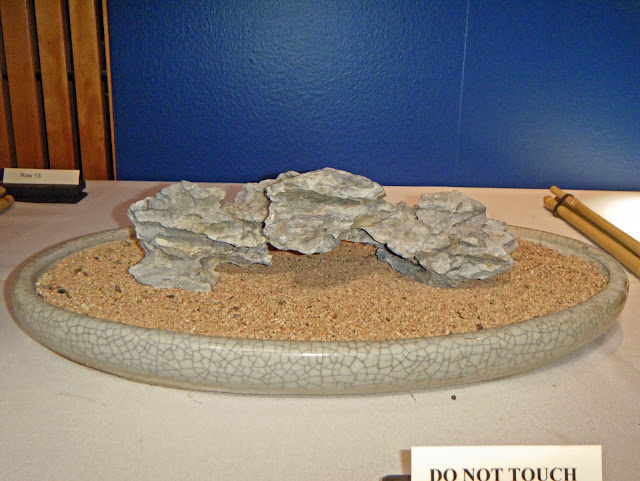I am what one bonsai friend calls a "northern tropicals nut," so I'm a little surprised myself that I didn't get more picturess of the tropical trees on display at the 2013 Mid-Am. (But then I also have to remind myself to take pictures at all.) Let me share what I did get.
Veldt fig,
Ficus burtt-davyi -- also known as South African fig and scrambler fig -- is growing in popularity with bonsaiists in this country, and deserves to. There are two natural varieties, large-leafed and small-, and the small-leafed is in excellent scale for bonsai. It is also one of the few bonsai-suitable
Ficus that I know of that adapts easily to a cascade style. This dramatic tree belongs to Scott Yelich of Eagle Creek Bonsai (
Eagle Creek Bonsai.)
 |
| Veldt fig, Ficus burtt-davyi, small-leafed variety. Notice the figs! |
This mame veldt fig (next) is over-potted, but has a nice structure. The owner may have it in an over-sized pot to encourage faster development. (The picture was taken thru the glass front of a "mame box.")
 |
| The pot's particular shade of brown complements the tree very well. |
Hamaetoxylon campechianum, often known as "logwood" or "campeche" in English, is a species I hope to try in the fairly near future. A native of Central America, it has very hard, dense wood; I think I've read that the heartwood will not float in water. It was an important source of fabric dyes for centuries, and is still of major economic significance. This specimen also belongs to Scott Yelich.
 |
| "Campeche," Hamaetoxylon campechianum. Thorns, naturally small leaves. |
I could kick myself for failing to get a full picture of Eric Noboa's banyan-style
Ficus microcarpa 'Tigerbark'. (Especially since the pot is not what you might expect but works very well with the tree.) But I did get a nice shot of the underside of the canopy. Eric spent several years developing the aerial roots, cheered on by the shady characters at "
BonsaiVault" forum. The presence of the drinking straws cost him points in the judging, but Eric accepted that since the straws were protecting new and very vulnerable aerial roots.
 |
| I'm reminded of a similar full-sized tree that friends and I found on the shore of an Ecuadorian lake. |
There are always some suiseki on display at the Mid-Am. I have a lot to learn about the fine points of suiseki (I own exactly one, so far) but they can be quite interesting. Here are a couple of pictures.
 |
| I see a natural stone bridge somewhere in the American west. What do you see? |
 |
| A larger display, with some info for Show visitors. |
Next post: a personal learning project (for lack of a better term for it) at the Mid-Am.
:-) :-) :-)






No comments:
Post a Comment